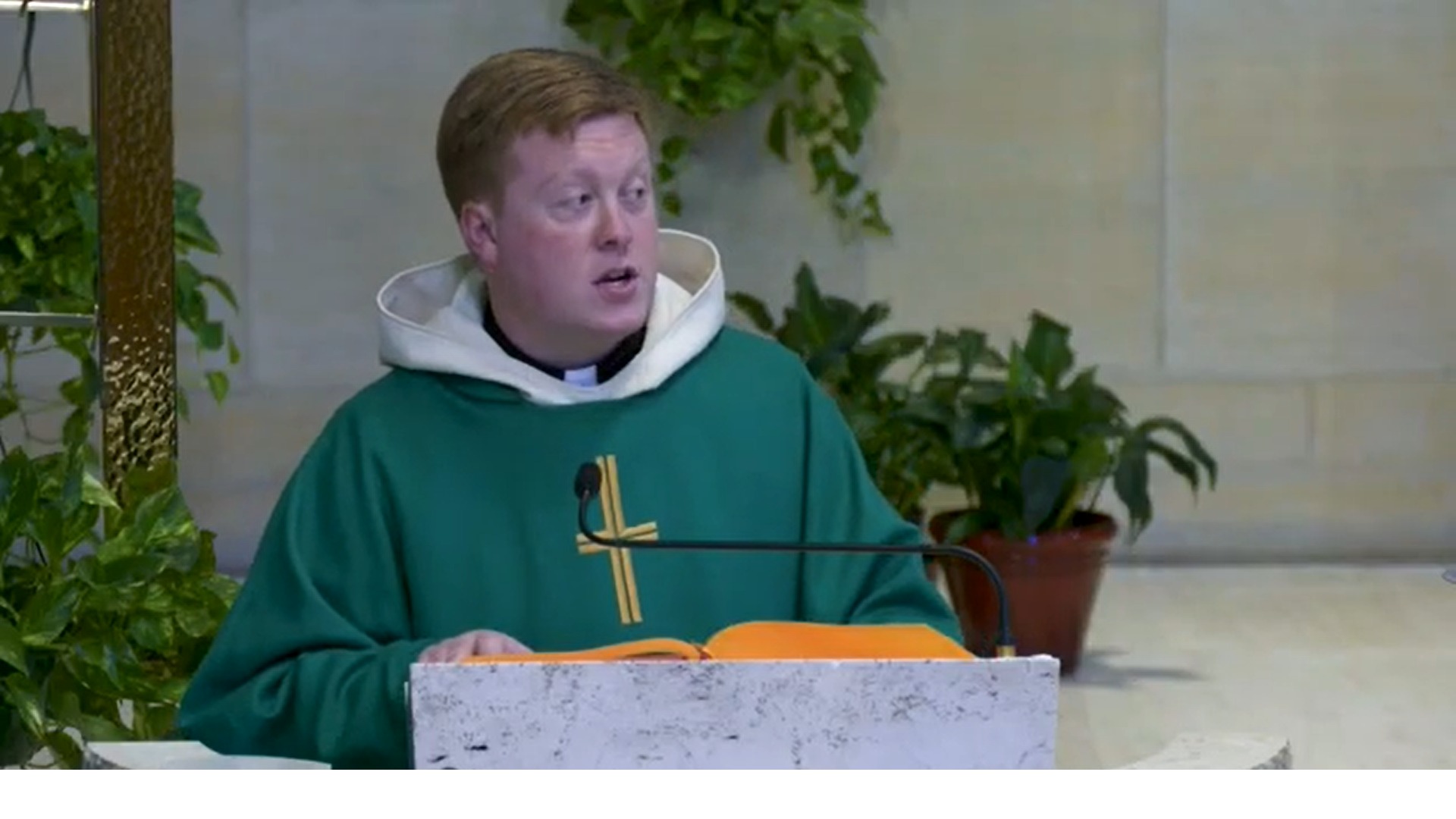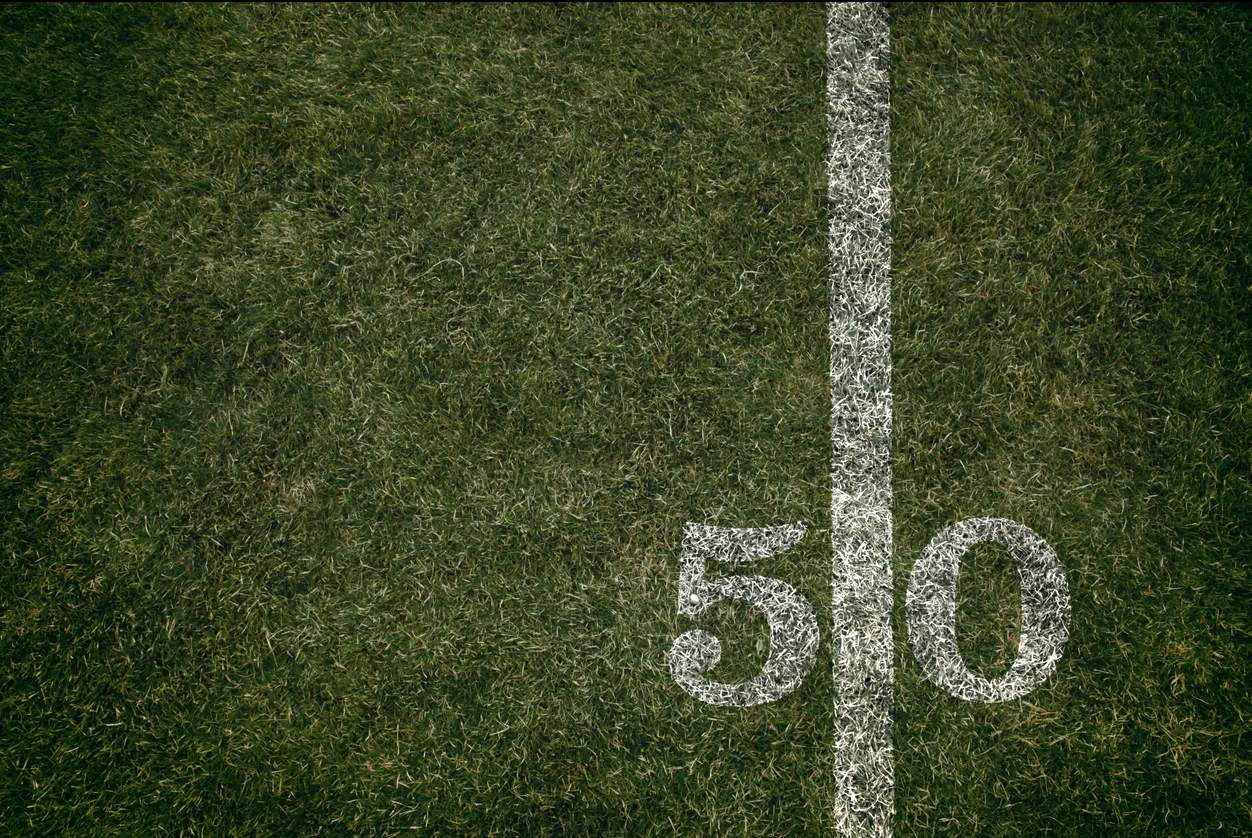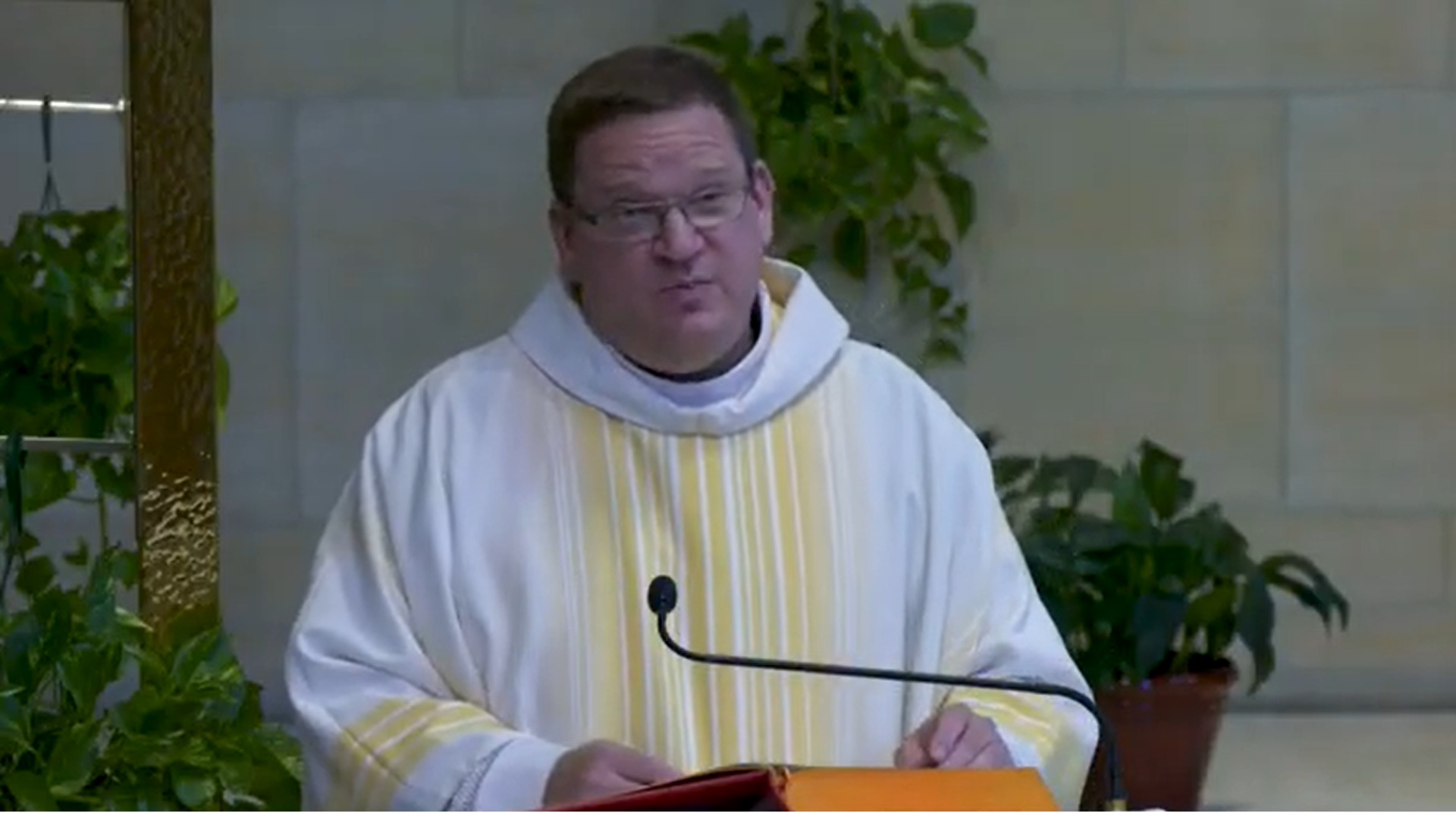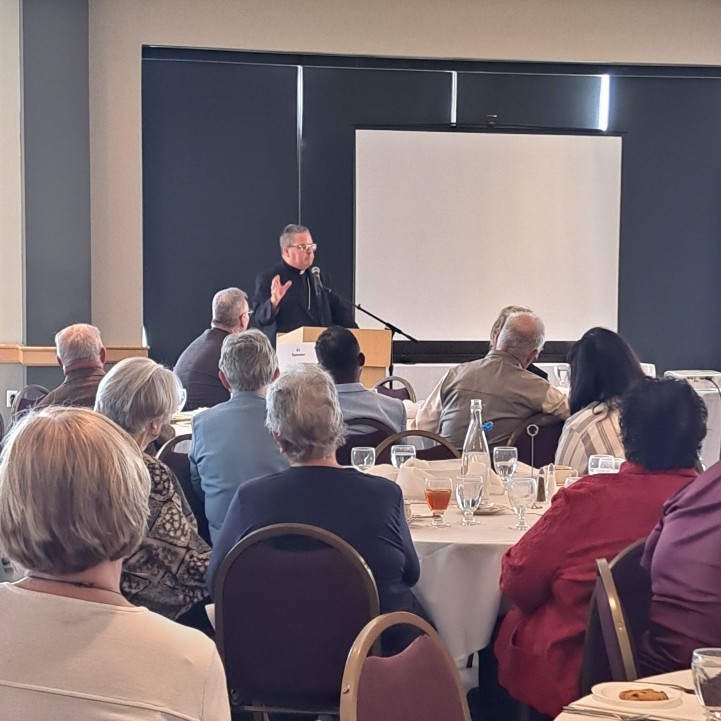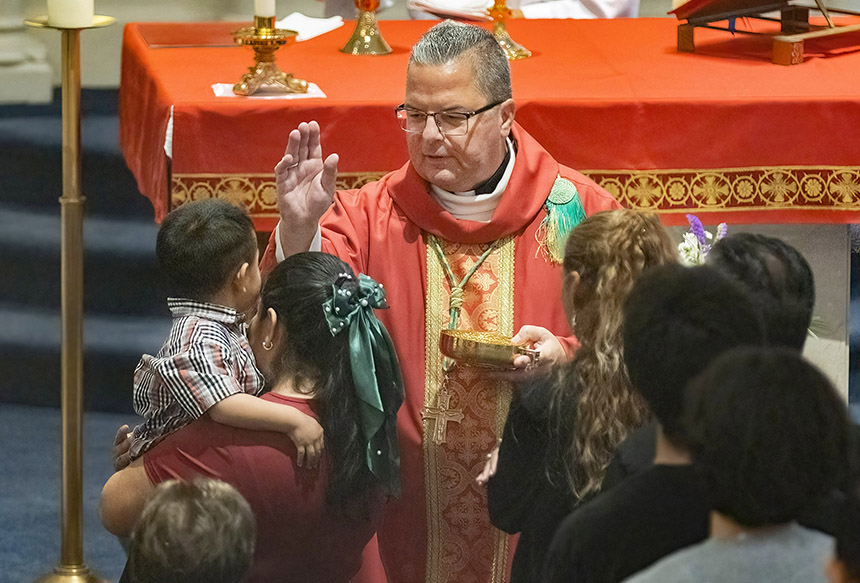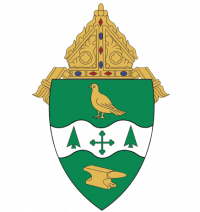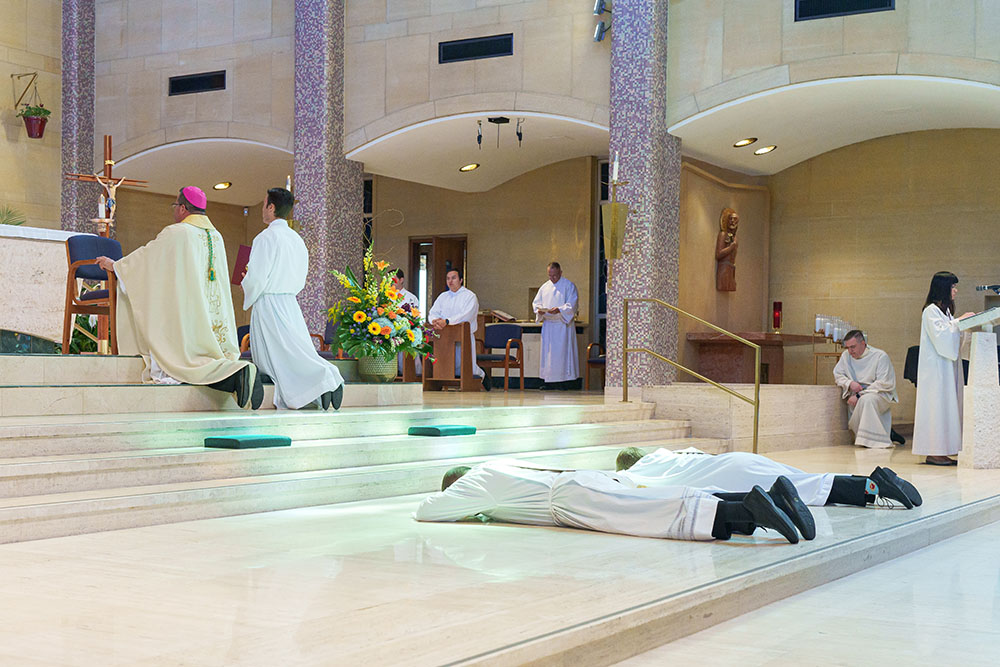
What believer would not be envious of the Apostles who spoke, ate and walked with Jesus?
Yet, through the ministry of the ordained priesthood, Jesus comes to us in many ways—primarily in His Body and Blood. Jesus intended this when He made his disciples the first priests on that first Holy Thursday, instructing them: “Do this in memory of me.”
On Saturday, June 7, Bishop Bonnar will ordain Deacon Travis Seagraves to the Order of Priesthood. What exactly goes into the Rite of Ordination, and what makes it different from a regular Mass?
The Election
The Ordination Mass follows the usual order of the Mass—including the Liturgy of the Word—until the after Gospel is proclaimed. This is when the Rite of Ordination officially begins. The ordinand, a transitional deacon, is called by name. He declares his presence and steps forward to be seated in the sanctuary. A designated priest—often the diocese’s vocation director, asks the Bishop to ordain the candidate to the priesthood. The Bishop then asks if the candidate is known to be worthy of the priesthood. The designated priest explains that, after a period of thorough examination, the Christian people and the candidate’s formators have found the transitional deacon to be worthy of entering the priesthood. The Bishop then “elects” the deacon to be ordained.
The ordaining Bishop then gives a homily on the Scriptures and the responsibilities of the priesthood. After the homily, the Bishop questions the deacon about his resolve to undertake the office of the Priesthood. These promises conclude with the deacon kneeling before the Bishop, placing his hands in the Bishop’s hands, and promising obedience to him and to his successors.
Litany of Supplication
The Bishop invites the congregation to pray for the ordinand, who will then lie face down in the sanctuary while those gathered sing the Litany of Saints. As an extreme posture of prayer, prostration indicates the candidate’s surrender to the grace of God and the intercessory power of the universal Church—both on Earth and in heaven. As part of the Ordination Rite, prostration can be traced back to the first half of the eighth century. It is a powerful act with precedent in the Gospel. When Jesus is transfigured, the disciples fall prostrate before Him. The only other time a priest lies prostrate during his liturgical ministry is on Good Friday, at the beginning of the liturgy.
Laying On of Hands
One of the most ancient rites in the Jewish-Christian tradition is the “Laying on of Hands,” a silent prayer known as “the chirotony,” which signifies a transfer of blessing. The Bishop and all priests present at the Mass lay hands on the head of the ordinand—a sign of unity and an invocation of God’s blessings—and the act is not merely symbolic, but transformative, just as the Eucharist is transformative. It is a calling upon the Holy Spirit.
This gesture is found both in the Old Testament and in the New—in both the Pastoral Letters and in the Acts of the Apostles (Acts 6:1-7). It also appears in the early third century (215 A.D.) in the Apostolic Tradition of Hippolytus, which details the ordination protocols in the early Church for Bishops, deacons and priests: “When a presbyter (priest) is ordained, the bishop shall lay his hand upon his head, while the presbyters touch him.”
It is at this moment that the Sacrament of Holy Orders actually affected. The transitional deacon then rises as a fully ordained priest.
Anointing of Hands
The new priest dons his new vestments—a stole and chasuble, which symbolically reflect the line from Scripture: “For my yoke is easy and my burden light” (Matthew 11:30). He then approaches the Bishop to have his hands anointed with sacred Chrism. Chrism is a mixture of olive oil and balsam—a fragrant resin found in certain plants, especially pine trees—which is blessed by the Bishop at the Chrism Mass. Chrism is used in the ordination of Bishops and priests, as well as in the Sacraments of Baptism and Confirmation and the consecration of altars and churches. As the Bishop anoints the new priest’s hands, he prays that the Holy Spirit will “guard and preserve” him so that he may “sanctify the Christian People and offer sacrifice to God.” The Anointing of Hands is a symbolic gesture that demonstrates the new priest’s authority to celebrate the Sacraments.
Tradito Symbolum
The Traditio Symbolum is a powerful and moving moment in the Rite of Ordination. It is at this point that the Bishop transfers the sacred vessels used to celebrate the Eucharist to the new priest. In the Middle Ages it was thought that this was the moment of ordination, but historical studies have confirmed that it is indeed the Laying On of Hands when the ordinand becomes a priest.
Presentation of the Gifts and the Liturgy of the Eucharist
The Ordination Rite concludes as designated members of the congregation bring forward the gifts of bread and wine. The Bishop, in turn, presents these gifts to the new priest, imploring him to “conform [his] life to the mystery of the Lord’s Cross.”
The Bishop then celebrates the Liturgy of the Eucharist with the new priest concelebrating and assisting with the distribution of Holy Communion surrounded by family, friends and brother priests.






